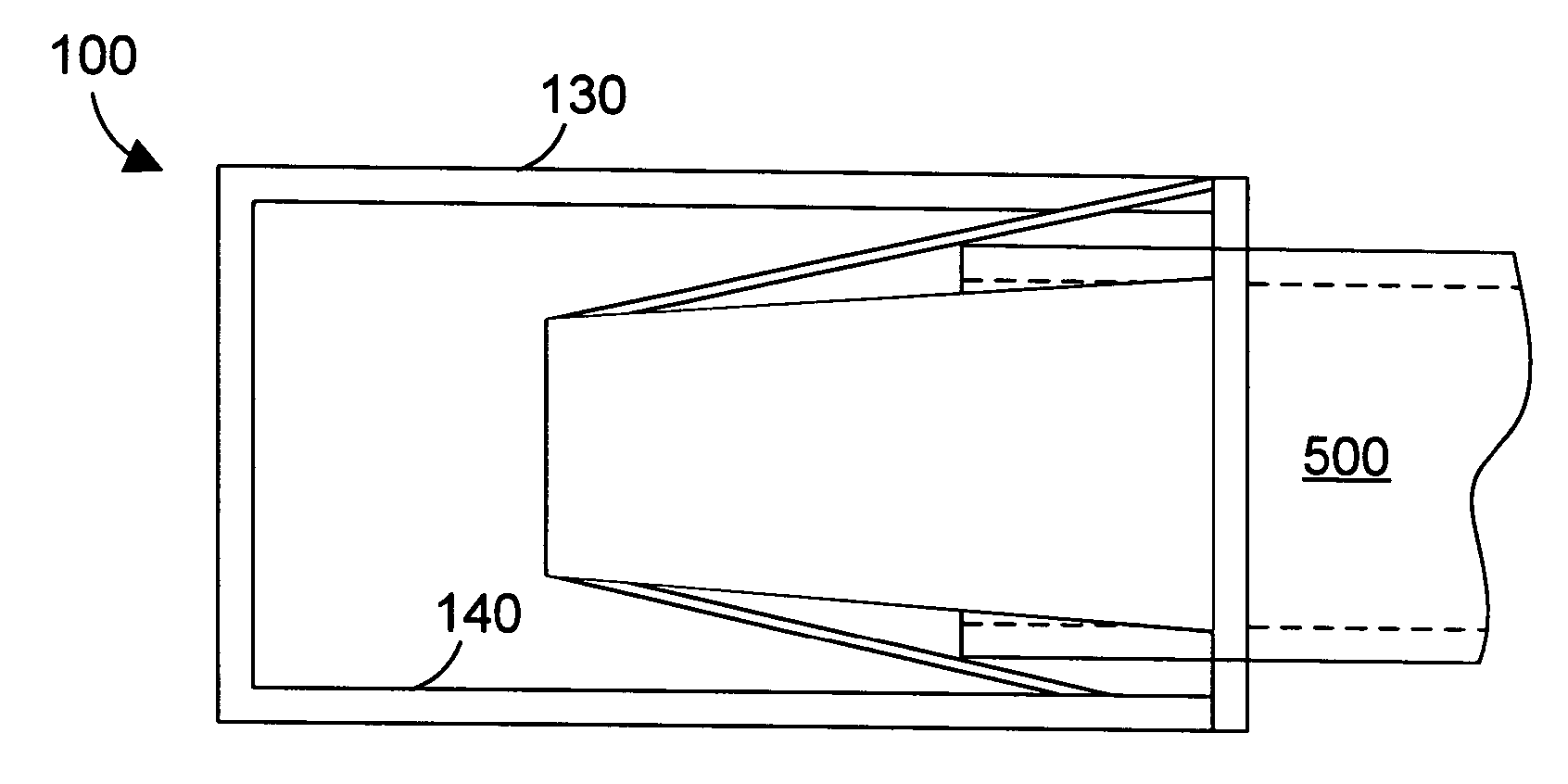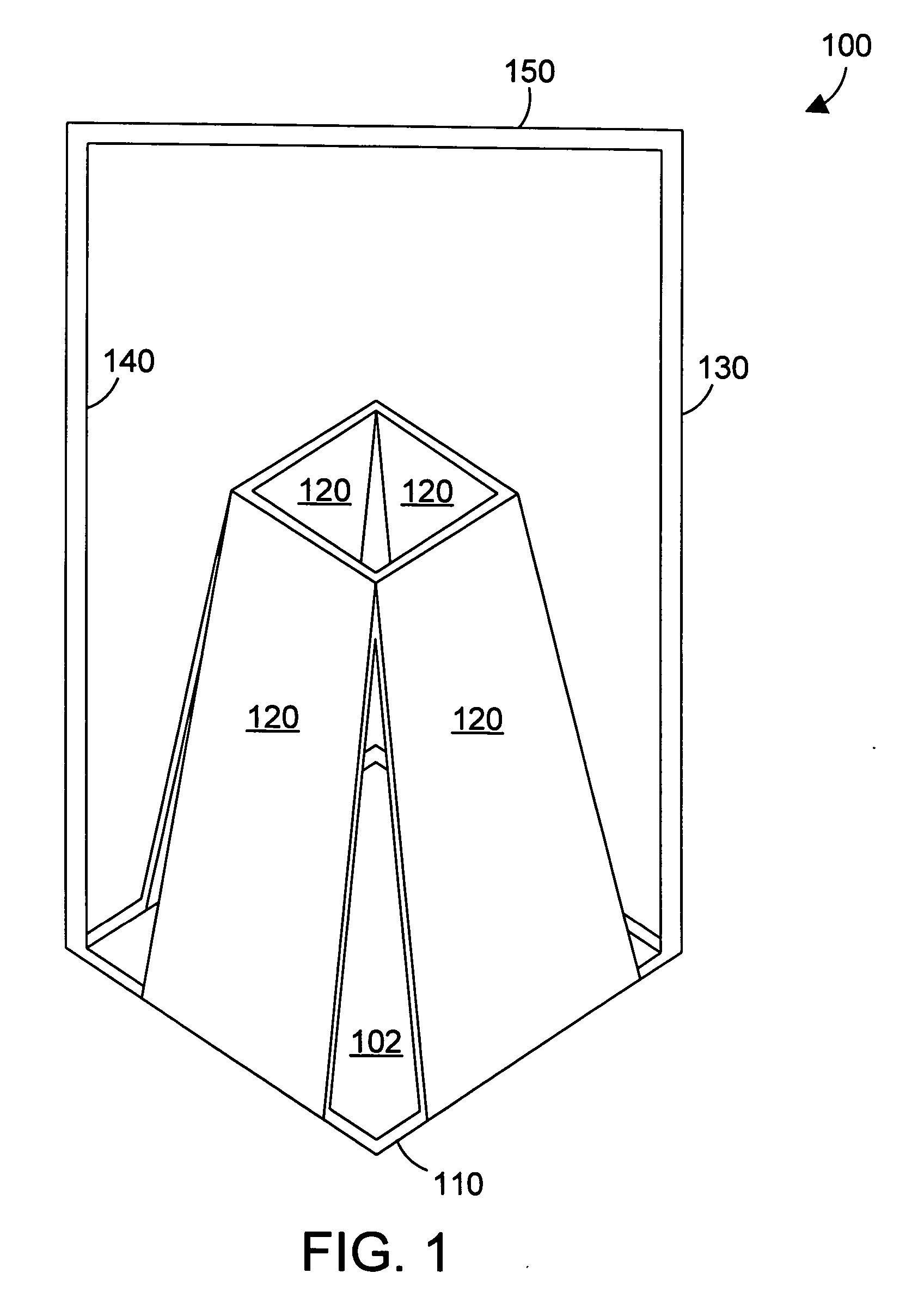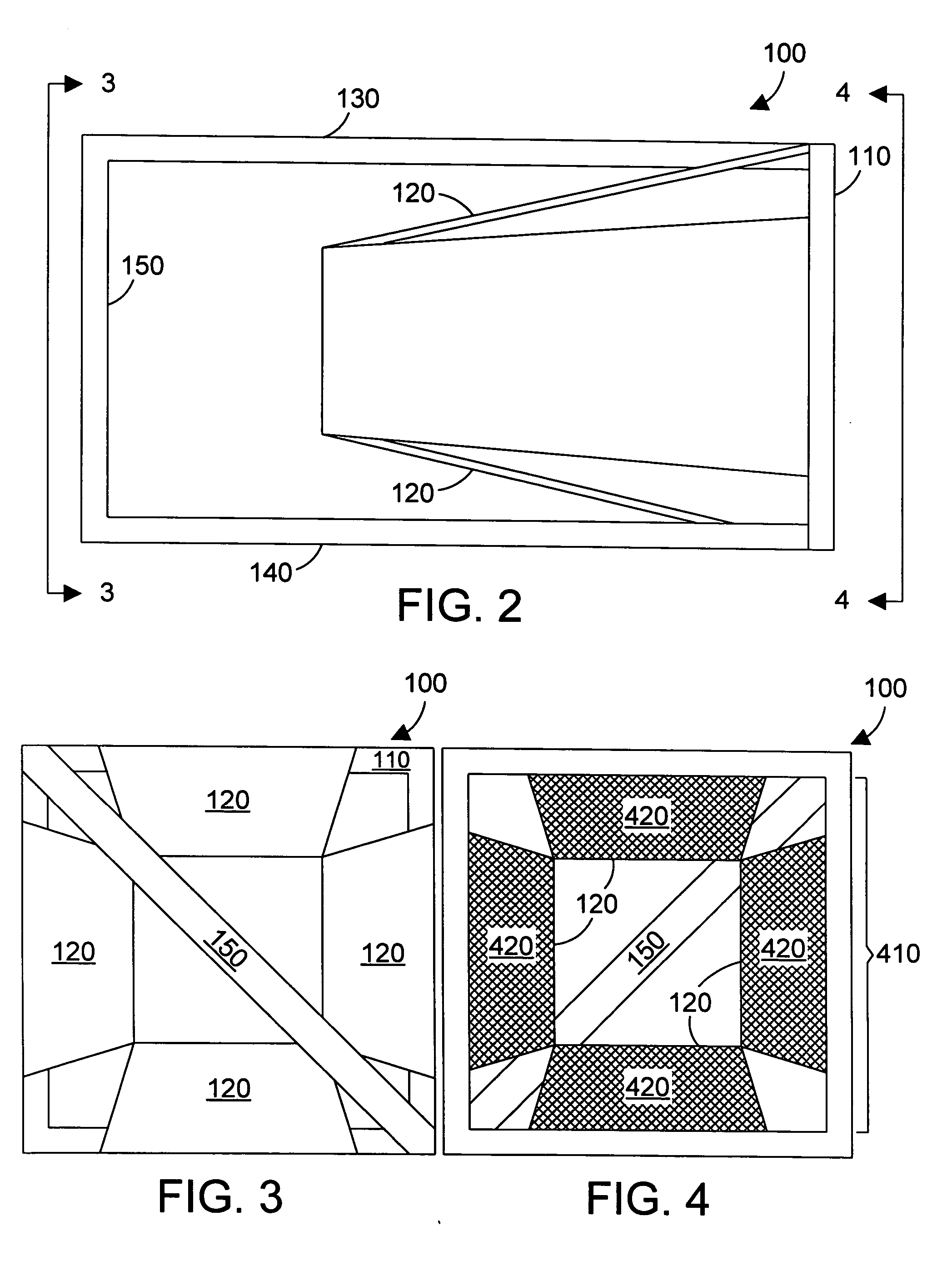Pipe beveling tool and method
a technology for beveling tools and pipes, applied in the direction of manufacturing tools, gear teeth, manufacturing apparatus, etc., can solve the problems of inconvenient use of large files, inefficient process, manual and difficult process for plastic pipe repair, etc., and achieve the effect of simple and easy to perform and easy to perform
- Summary
- Abstract
- Description
- Claims
- Application Information
AI Technical Summary
Benefits of technology
Problems solved by technology
Method used
Image
Examples
Embodiment Construction
[0021] Before presenting the preferred embodiments herein, it is helpful to review known methods for repairing a leak in a plastic pipe. Referring to FIG. 9, a prior art method 900 begins by locating a leak in the pipe (step 910). The section of pipe that leaks is then removed by cutting away a section of the pipe using a saw (step 920). A new piece of pipe is then cut to fit where the section of pipe was removed (step 930). The edges of the sections of pipe to be spliced are then beveled (step 940). Repair splices are then installed between the ends of the old pipe and the ends of the new piece of pipe (step 950). The reason for beveling the edges of the pipe in step 940 is to make it easier to insert the pipes into the splices. In most cases, the edges of each pipe are beveled, which means the person making the repair must bevel four pipe ends, the two ends of the existing pipe that are still in the ground, and the two ends of the new piece of pipe that was cut to replace the dama...
PUM
| Property | Measurement | Unit |
|---|---|---|
| angle | aaaaa | aaaaa |
| diameters | aaaaa | aaaaa |
| abrasive | aaaaa | aaaaa |
Abstract
Description
Claims
Application Information
 Login to View More
Login to View More - R&D
- Intellectual Property
- Life Sciences
- Materials
- Tech Scout
- Unparalleled Data Quality
- Higher Quality Content
- 60% Fewer Hallucinations
Browse by: Latest US Patents, China's latest patents, Technical Efficacy Thesaurus, Application Domain, Technology Topic, Popular Technical Reports.
© 2025 PatSnap. All rights reserved.Legal|Privacy policy|Modern Slavery Act Transparency Statement|Sitemap|About US| Contact US: help@patsnap.com



